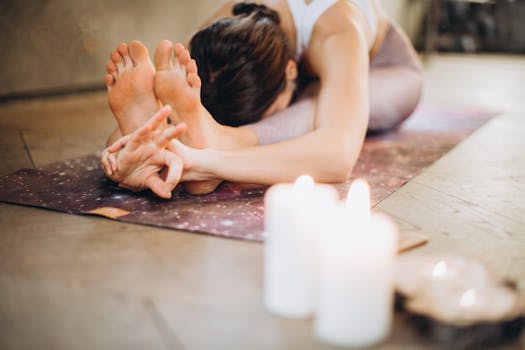
Unlocking Inner Peace: Essential Mindfulness Meditation Techniques
Takeaways:
- Mindfulness meditation enhances self-awareness and emotional regulation.
- Several practical techniques can be easily integrated into daily life.
- Regular practice can lead to significant improvements in mental clarity and stress reduction.
In today’s fast-paced world, finding moments of peace can be a challenge. Mindfulness meditation offers a pathway to tranquility by encouraging us to focus on the present moment. Through various techniques, individuals can cultivate a deeper awareness of their thoughts, emotions, and surroundings, leading to improved mental health and emotional well-being.
Understanding Mindfulness Meditation

The primary goal of mindfulness meditation is to develop a non-judgmental awareness of the present moment. This means observing our thoughts and feelings without trying to change or judge them. By doing so, we can learn to respond to stress and anxiety more effectively, fostering a sense of inner peace.
Essential Mindfulness Meditation Techniques

1. Breath Awareness
One of the simplest and most effective mindfulness techniques is breath awareness. This practice involves focusing your attention on your breath as it flows in and out of your body. To get started:
- Find a comfortable seated position.
- Close your eyes gently or lower your gaze.
- Take a few deep breaths, inhaling through your nose and exhaling through your mouth.
- Then, allow your breath to return to its natural rhythm.
- Concentrate on the sensation of your breath entering and leaving your body.
- If your mind wanders, gently bring your focus back to your breath.
Practicing breath awareness for just a few minutes each day can significantly enhance your mindfulness and help you stay grounded in the present moment.
2. Body Scan
The body scan technique is a powerful way to connect with your physical sensations and release tension. Here’s how to practice it:
- Lie down comfortably on your back with your arms at your sides.
- Close your eyes and take a few deep breaths.
- Begin by bringing your attention to your toes, noticing any sensations you feel.
- Gradually move your attention up through your feet, legs, abdomen, chest, arms, neck, and head.
- As you focus on each part of your body, consciously relax any tension you find.
Body scans can help you develop a greater awareness of your physical state and promote relaxation throughout your body.
3. Mindful Observation
Mindful observation involves using your senses to engage with your environment fully. This technique can be practiced anywhere and is especially effective in nature. To practice mindful observation:
- Choose an object or scene in your environment, such as a flower, tree, or landscape.
- Take a moment to observe it closely, noting its colors, shapes, textures, and any other details.
- Engage your senses—what do you smell, hear, or feel as you observe?
- Allow yourself to be fully present with this experience, letting go of any thoughts about the past or future.
This technique helps cultivate a deeper appreciation for the world around you and can be a refreshing break from daily stressors.
4. Loving-Kindness Meditation
Loving-kindness meditation, or Metta, focuses on developing an attitude of love and kindness towards oneself and others. To practice this technique:
- Begin by finding a comfortable seated position.
- Close your eyes and take a few deep breaths.
- Silently repeat phrases such as “May I be happy, may I be healthy, may I be safe, may I live with ease.”
- After a few minutes, extend these wishes to others, starting with a loved one and gradually including friends, acquaintances, and even those with whom you have difficulties.
This practice promotes compassion and can help reduce feelings of anger and resentment.
Incorporating Mindfulness into Daily Life

1. Set Regular Practice Times
Consistency is key in mindfulness practice. Set aside dedicated time each day, whether it’s morning, during lunch, or before bed, to practice your chosen techniques.
2. Use Mindfulness Reminders
Throughout the day, use reminders to bring your focus back to the present. This could be a gentle nudge to take deep breaths or a visual cue like a sticky note.
3. Practice Mindfulness in Everyday Activities
Mindfulness doesn’t have to be limited to formal meditation sessions. You can practice mindfulness while eating, walking, or even washing dishes. Pay attention to the sensations, smells, and sounds around you.
4. Join a Mindfulness Group or Class
Consider joining a local or online mindfulness group for support and motivation. Engaging with others can enhance your practice and provide community.
5. Be Patient and Kind to Yourself
Mindfulness is a skill that takes time to develop. Be patient with yourself, and remember that it’s normal for your mind to wander. The goal is not perfection but to cultivate awareness and presence.






